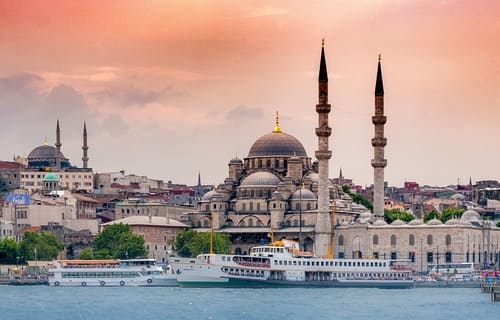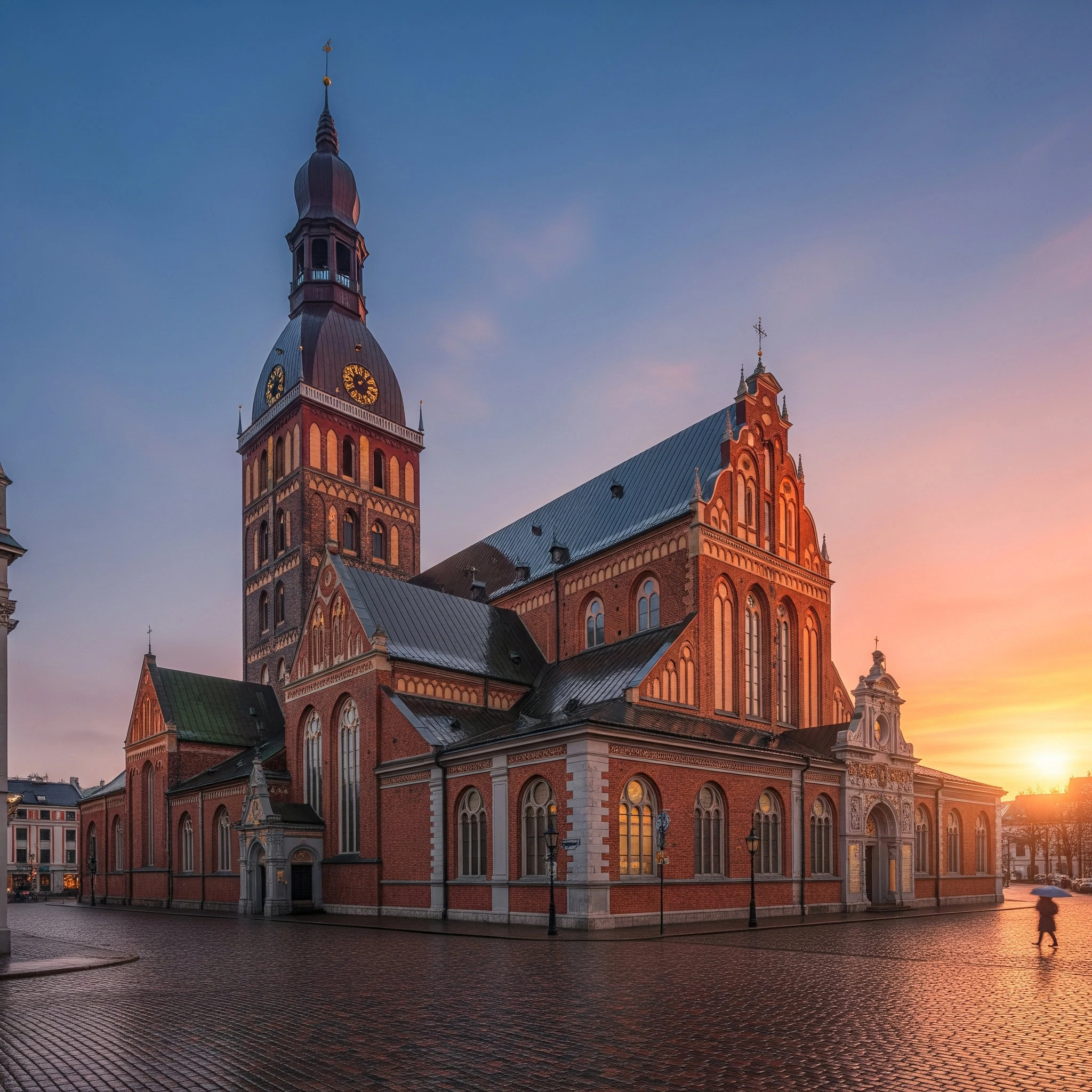Forget Paris, Rome, and Barcelona. Europe’s most enchanting experiences often hide in the shadows of these tourist ‘hot-spots’. For slow travel enthusiasts seeking authentic experiences by rail, these lesser-known stops along Europe’s train routes offer rich cultural treasures without the crowds.
Setting out from London, your journey east can weave through medieval fortresses, rock-hewn churches, and Ottoman-era towns that most travellers zoom past. Whether you’re tracing the historic Train Bleu route or venturing into the Transylvanian forests, these seven hidden gems showcase why slow travel by train remains the most rewarding way to explore Europe.
1. Gjirokastra: Albania’s City of Stone
Perched dramatically above the Drino Valley, Gjirokastra appears like a medieval dream carved from silver-grey stone. This UNESCO World Heritage site, with its distinctive Ottoman architecture and commanding fortress, offers a glimpse into a lesser-explored corner of Europe.
Getting there: Your rail journey from London crosses through France and Italy before connecting to local transport into Albania. This slower pace allows you to absorb the changing landscapes and cultures as you venture southeast.
Explore our London to Albania rail adventure
What not to miss:
- The imposing Gjirokastra Castle, offering panoramic valley views
- Traditional stone houses with their distinctive local architecture
- The Ethnographic Museum, housed in the birthplace of writer Ismail Kadare
- Local artisans crafting Albania’s famous filigree silver
2. Alba Iulia Citadel: Romania’s Star-Shaped Wonder
Hidden in the heart of Transylvania, Alba Iulia’s magnificent star-shaped fortress represents one of Europe’s finest Vauban-style citadels. Yet surprisingly few international visitors venture to this architectural marvel.
Getting there: The journey from London traces the historic Orient Express route, through France, Switzerland, and Hungary before reaching Romania. Each stop adds another layer to your understanding of European fortification history.
View our London to Istanbul rail journey
Must-experience moments:
- The daily Guard Changing ceremony, a colourful spectacle of historical reenactment
- Walking the complete star-shaped fortification walls
- Visiting the Union Hall, where modern Romania was born
- Exploring the Roman Catholic Cathedral’s 1000-year history
3. Churches of Ivanovo: Bulgaria’s Rock-Hewn Sanctuaries
Carved into sheer rock faces above the Rusenski Lom river, these medieval Orthodox churches contain some of Europe’s most remarkable frescoes. Their remote location has preserved both their spiritual atmosphere and artistic treasures.
Getting there: Continue east from Romania, following the ancient routes that connected medieval Bulgarian kingdoms to Constantinople.
Hidden treasures:
- The Church of the Holy Virgin, with its perfectly preserved 14th-century frescoes
- Monastery cells carved into the cliff face
- The peaceful woodland walks connecting the church complex
- Views across the dramatic river valley
4. Mostar: Bosnia’s Bridge Between Cultures
While Mostar’s famous bridge is no secret, few travellers spend more than a few hours here. Those who linger discover a city rich in cultural layers and healing from its recent past.
Getting there: Your rail journey from London passes through Croatia, offering stunning Adriatic coastal views before turning inland to Bosnia.
See our Balkan rail adventures
Don’t miss:
- Dawn at the Old Bridge, before the day-trippers arrive
- Traditional coffee ceremonies in the old town
- Local copper craftsmen at work
- Evening walks along the Neretva River
5. Alghero: Sardinia’s Catalan Corner
This beautiful coastal city offers an unexpected slice of Catalan culture in Italy. Its perfectly preserved medieval centre, wrapped in golden walls, tells stories of cultural exchange and maritime history.
Getting there: The rail journey includes a memorable crossing to Sardinia, adding maritime adventure to your rail experience.
Discover our London to Sicily rail and sea adventure
Essential experiences:
- Walking the complete circuit of sea walls at sunset
- Exploring the Catalan Gothic churches
- Shopping for local coral jewellery
- Sampling Sardinian-Catalan fusion cuisine
6. Nîmes: France’s Rome Away From Rome
Often overshadowed by Provence’s more famous destinations, Nîmes boasts some of the best-preserved Roman architecture outside Italy. Its laid-back atmosphere and authentic French life make it perfect for slow travel.
Must-see sights:
- The perfectly preserved Maison Carrée Roman temple
- Les Arènes, still hosting events after 2000 years
- The peaceful Jardins de la Fontaine
- The contemporary Carré d’Art, contrasting old and new
7. Le Train Bleu: Paris’s Golden Age Railway Restaurant
Hidden above the bustle of Paris’s Gare de Lyon, Le Train Bleu restaurant stands as a stunning monument to the golden age of rail travel. This palatial restaurant, with its gilded ceilings and historic frescoes, has been serving travellers since 1901 and remains one of Europe’s most spectacular dining venues.
Getting there: Begin your journey east from London with a memorable lunch stop in Paris, experiencing the same luxury that once welcomed travellers bound for the French Riviera.
View our London to Istanbul rail journey
Highlights:
- Belle Époque architecture and original 1901 décor
- 41 ceiling frescoes depicting different scenes of France
- Historic menu featuring classic French cuisine
- The “Big Ben” salon, celebrating Franco-British connections
Planning Your Journey
Slow travel by rail isn’t just about the destinations – it’s about the journey itself. Breaking your trip at these lesser-known stops allows you to:
- Reduce your carbon footprint
- Support local communities off the main tourist track
- Experience authentic local life
- Create deeper connections with places and people
Ready to Explore?
These hidden gems are just a sampling of the extraordinary places waiting to be discovered along Europe’s rail network. By choosing slow travel by train and ships, you’re not just reaching destinations – you’re immersing yourself in the gradual unfolding of landscapes, cultures, and stories that make Europe so extraordinary.
Learn more about slow travelling and be part of a movement that’s changing our relationship to global tourism.



